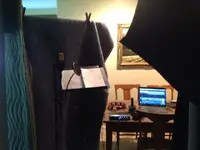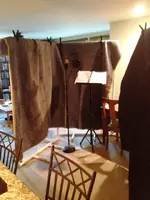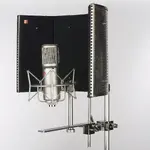Muddy T-Bone
New member
I recently posted an inquiry as to the purpose of vocal booths, as I had a lead vocal recorded in a large, live room that I just could not get to sound good. I had a number of replies that were helpfull, and did some research here, and found a fellow that posted his cheap and portable PVC pipe gobo, using moving blankets. The OP is below.
https://homerecording.com/bbs/gener...on-vocal-booth-live-room-vs-dead-room-357907/
I constructed 3 of these yesterday, and recorded a new lead vocal (as well as 2 percussion tracks). All I can say is that this is a recording life changing experience. The vocal is so clean and natural its unbelievable. I could easily mix it dry it sounds so good. In the end, I decided to send it to my favorite 'verb, and pulled the fader way down on the receive and panned it about 30%R. Wow. The vocal centered is so clean, and with the verb panned it sounds absolutely like it was recorded in a larger space, with the slight delay bouncing off the right wall.
Percussion sound great in there as well. I'm sold on recording vocals this way in the future.
https://homerecording.com/bbs/gener...on-vocal-booth-live-room-vs-dead-room-357907/
I constructed 3 of these yesterday, and recorded a new lead vocal (as well as 2 percussion tracks). All I can say is that this is a recording life changing experience. The vocal is so clean and natural its unbelievable. I could easily mix it dry it sounds so good. In the end, I decided to send it to my favorite 'verb, and pulled the fader way down on the receive and panned it about 30%R. Wow. The vocal centered is so clean, and with the verb panned it sounds absolutely like it was recorded in a larger space, with the slight delay bouncing off the right wall.
Percussion sound great in there as well. I'm sold on recording vocals this way in the future.





